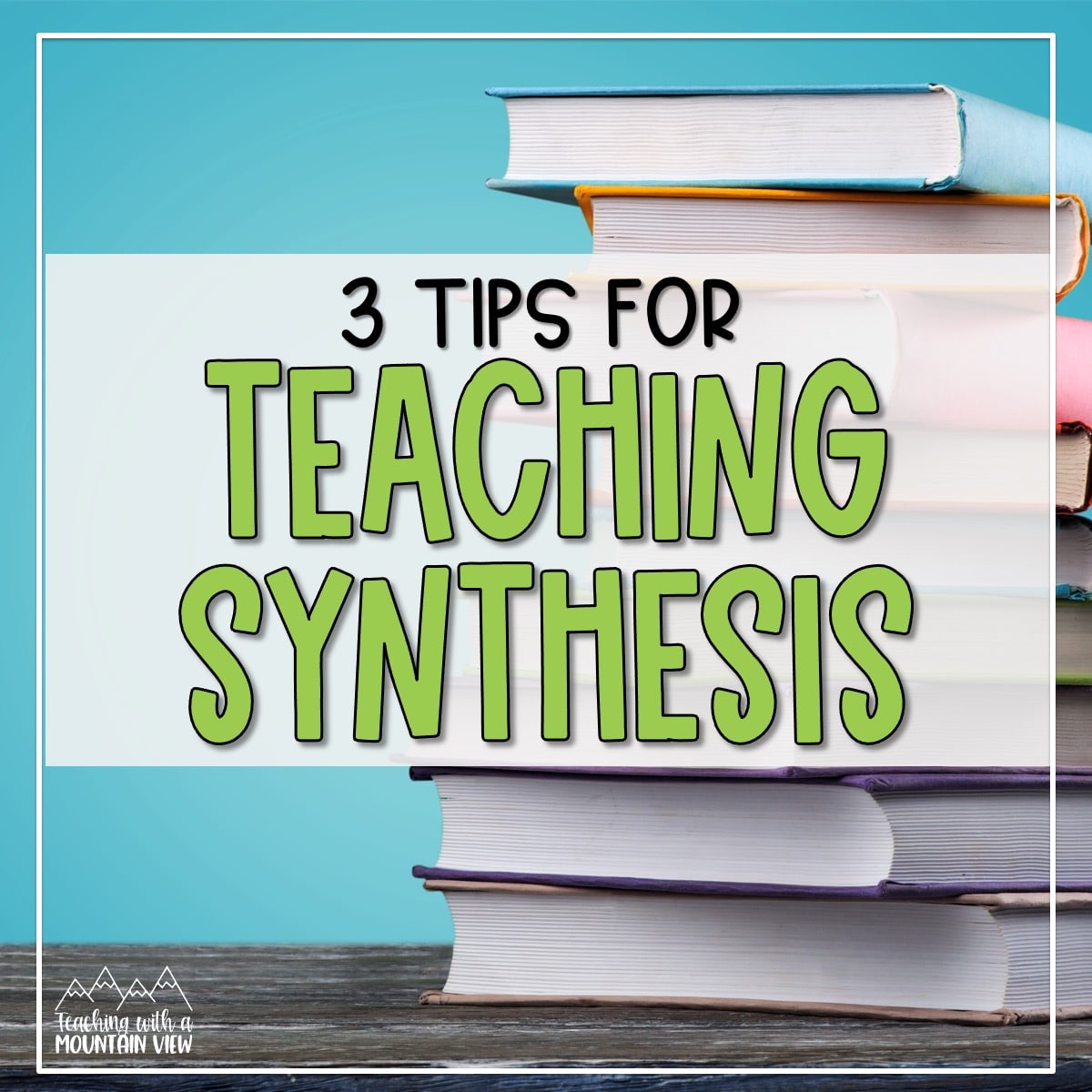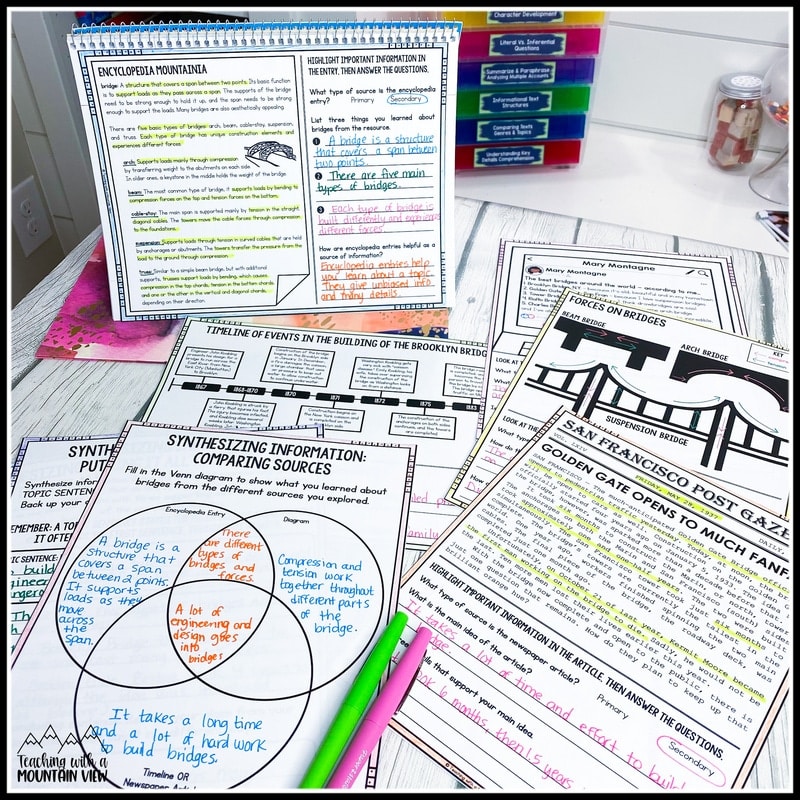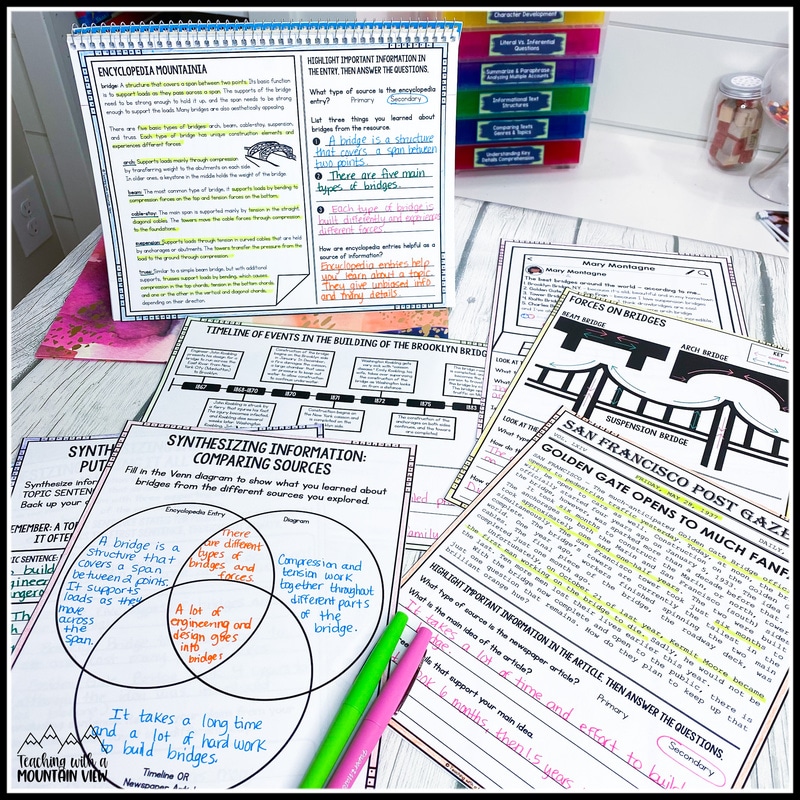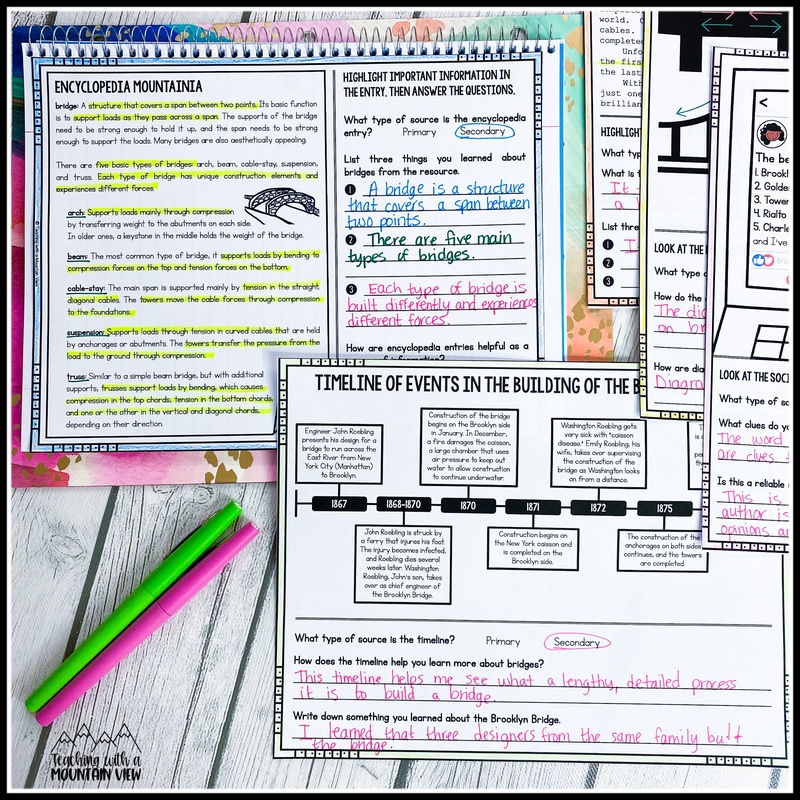
During a planning session one day, I was reviewing the standards for my upcoming unit. I read one of the standards to a teacher next to me: “How exactly do we teach students to ‘synthesize information to create a new understanding’?” I knew what the word synthesize meant, but I needed an authentic, easy-to-understand way to convey its meaning to my students. Here are my best three tips for teaching synthesis to your upper elementary students.

What exactly is synthesis and why do we teach it?
Synthesizing is the process of combining sources to create a shared meaning. It’s a fancy word for something you actually do quite often. When a big news story comes out you might read about it in an article, hear about it from a friend, and watch a story about it on the news. You then combine different sources of information to create meaning. That is synthesizing information.
This can be a challenging skill for students. Synthesizing or combining sources requires students to compare and contrast, make connections across texts and genres, have stellar reading comprehension, take notes and pick out key details, and more. However, challenging doesn’t have to mean impossible! With plenty of practice, students can master combining sources and synthesizing the information within them.
Nonfiction Synthesizing and Combining Multiple Sources
If you’re looking to take the next step in nonfiction reading… THIS is the set of resources that you need! Students will build important critical thinking skills by combining and analyzing information from multiple texts on the same topic. Ultimately, students will be able to integrate information from two or more texts on the same topic in order to write or speak about the subject knowledgeably.
Here are my favorite ways to help students master synthesizing.
#1 Create a Synthesis Statement
If your students are new to synthesis, consider starting small. Find two sources about a topic. Sources can be articles, videos, pictures, or diagrams. Make sure you find a super high-interest topic for this one! For example, students could watch a video about how candy corn is made and then read about the history of candy corn. After viewing both sources, they will craft a synthesis. To help students, you can provide them one of the following sentence frames:
- I learned that….
- The information helped me learn that…
- After reading, I understand…
At this point, I encourage them to highlight information they learned from ONE source in one color and the other source in a different color.
#2 Create a Synthesis from Multiple, Varied Sources
Once students understand the basics of synthesis, you can push and challenge their knowledge further. One way to do this is through several sources on a similar topic. Students will combine the information from several sources to create one new meaning. This is a more challenging task for students, so don’t worry if your students don’t master it the first time.
To make practicing combining sources easier, I created several nonfiction synthesis activities for students. In this resource, students are given 5 high-quality sources to read and make a synthesis from. Sources vary from social media posts, quotes, diagrams, encyclopedia entries, timelines, newspaper articles, etc. This resource also includes guided questions and tasks to help students with their synthesis.
This resource is planned to help guide your students through the process of synthesis. Each synthesis activity focuses on a different topic: bridges, education rights, photosynthesis, and the Titanic. You can have access to all of these topics through Nonfiction Synthesizing and Combining Multiple Sources bundle.
#3 Research a Topic
A very common way to practice synthesis in school is through research projects. Naturally, research projects require students to view many sources and combine the information they learn to answer a research question. The great part about research is that it can be as involved or as simple as you want it to be. For beginner students, you may want to give them a research question. For students with more research practice, they can create their own.
Before diving into research, be sure to explain to students where they can find a variety of (good) sources. Define what a “good” source is (though this is covered extensively in the Nonfiction Synthesizing and Combining Multiple Sources bundle!). After students have collected their research, they will then draft a paragraph or essay. Their topic sentence and writing will be created from their synthesis of their sources!
Related Skills
Synthesis can be a tough skill, but with enough practice, your students will begin to show mastery. If you want more tips on helping your students become successful synthesizers, check out these blog posts on comparing passages, writing summaries for texts, or analyzing firsthand and secondhand accounts (all skills needed for synthesizing!).
Mary Montero
I’m so glad you are here. I’m a current gifted and talented teacher in a small town in Colorado, and I’ve been in education since 2009. My passion (other than my family and cookies) is for making teachers’ lives easier and classrooms more engaging.














